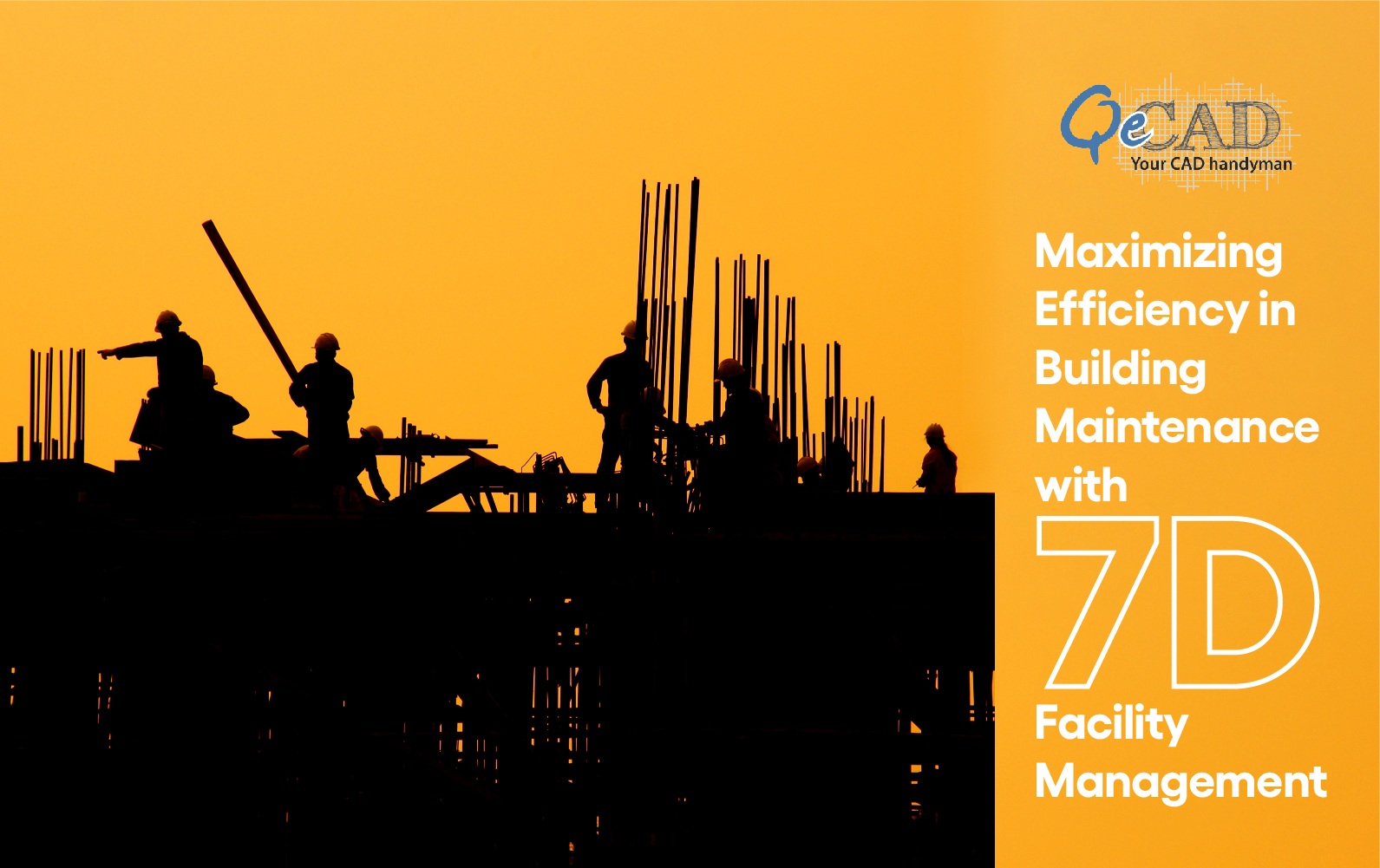
Introduction
The seamless operation of structures as well as their infrastructure has been guaranteed by facility management, an important component of building administration. Building proprietors and executives constantly search for methods to make building upkeep procedures more effective while spending less money. The implementation of 7D Facility Management, as well as Building Information Modeling (BIM) Services, has grown into an increasingly prevalent choice within the past couple of decades. This blog article examines the advantages of 7D facility management along with the way it aids with building repair or maintenance.
What is 7D Facility Management?
A computerized method of managing facilities called 7D facility management makes use of building information modelling (BIM). A virtual representation of a structure that contains all of its structures, parts, and resources has been generated using BIM technology. The structure’s lifecycle, coming from planning and building in order to upkeep and processes, is thereafter handled using the model as a guide. With the addition of time and expense to be two additional parameters included in the BIM model, 7D facility management extends this one stage more thoroughly.
Building administrators and property owners may monitor the efficiency of their structures over the duration and calculate the associated expenses of upkeep and fixes using 7D facility management. The combination of different maintenance tasks constitutes a component of the extensive 7D facility management strategy.
The following is what the 7D within 7D facility management refers for:
- Discover:-
The first phase entails determining the concern or challenge that requires to be resolved. Data analysis as well as the underlying cause identification are techniques employed in BIM technology to find the issue. - Define:-
After the issue can be located, the next step has been to give it a clear definition. This phase entails writing a thorough explanation of the issue and how it affects the structure. - Design:-
An approach has been developed in this step to address the issue. Using BIM technology, a practical, affordable, and ecological answer is designed. - Develop:-
The answer is put into practice after it was originally planned. The solution’s execution has been completed during this phase. - Document:-
At this point, the entire solution’s details have been recorded. The remedy’s effects on the structure are documented using BIM technology. - Deliver:-
The answer is given when it is actually put into practice. During this phase, the customer will receive the treatment. - Data:-
Data regarding the remedy and how it will affect the construction has been gathered during this point. Data can be collected concerning the answer and how it affects the building using BIM technology. To increase the effectiveness of building upkeep, this information has been employed.
How Would 7D Facility Management Affect Building Upkeep?
- Improved Design and Scheduling
Building conceptualization and execution can be improved with 7D facility administration. Building administrators and executives may build an online representation of a construction that contains all of its systems as well as their parts using BIM technology. The resulting model may be utilized to replicate various situations and evaluate how the structure performs in various environments. This makes it possible to make more informed choices if it pertains to a building’s layout and building materials, which may lead to improved efficiency and decreased expenses for upkeep. - More effective administration of assets
An essential component of building management has been asset administration. Facility managers can determine requirements for upkeep and prepare repair tasks in advance thanks to 7D facility management’s comprehensive data regarding every asset’s performance and state of health. Among the most economical upkeep techniques may be found using the 7D model. - Greater Effectiveness in Energy
Building efficiency in energy use plays a role in maintaining buildings because it may reduce energy expenses and usage. The operational efficiency of energy-efficient building structures and machinery may be enhanced with the aid of 7D facility administration. Lighting, HVAC systems, and insulating materials have been a few examples of regions in which the consumption of energy might be decreased with the aid of the 7D model. - Improved Collaboration
Collaboration is necessary among many parties involved in facility administration, which includes property owners, independent contractors as well as residents. 7D Facility Management offers an opportunity for improved collaboration between stakeholders because it creates a shared knowledge of the procedures and standards for maintaining buildings. The 7D model additionally has the potential to pinpoint domains, like allocation of resources and upkeep organizing, in which collaboration could be enhanced. - Predictive Maintenance and Sustainability
A technique for maintenance called predictive maintenance makes employing data analytics in order to foretell the need for maintenance tasks. By giving comprehensive data on the performance of assets along with upkeep needs, 7D facility management may assist in the implementation of predictive maintenance approaches. Since BIM technology has been utilized to create ecologically sound remedies, 7D facility administration is sustainable. This lessens the environmental effect of building maintenance.
Conclusion
In summation, 7D facility management serves as an all-encompassing strategy that combines facility management and BIM technology. Improvements in productivity, affordability, environmental sustainability, security, as well as asset management are just a few advantages of 7D facility administration. BIM technology, used by 7D facility management, enhances the general efficacy and productivity of maintenance of buildings by offering an exhaustive response.
